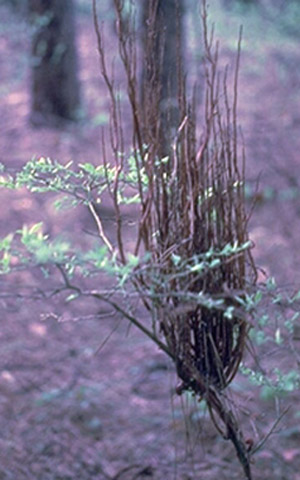Pruning is a good time to scout for diseases in blueberries.
Make sure your pruning instruments are sanitized before you begin. Lysol is considered the best sanitizer for pruners, as it kills fungi, viruses, and bacteria, and doesn’t corrode metals. A solution of 10% bleach in 90% water is as effective as Lysol, but will corrode metals over time. Alcohol will work well to kill bacteria and viruses, but isn’t very effective against fungal spores.
After pruning, move canes away from the bushes. The best way to prevent diseases next year is to burn the canes. The wood ashes can be used as a fertilizer to provide K and micronutrients to a variety of crops.
Fusicoccum Canker:
Reddish spots on canes, often near the ground near a leaf scar. Spots 1 inch and larger develop a bull’s eye pattern. Read more about canker diseases at this link.
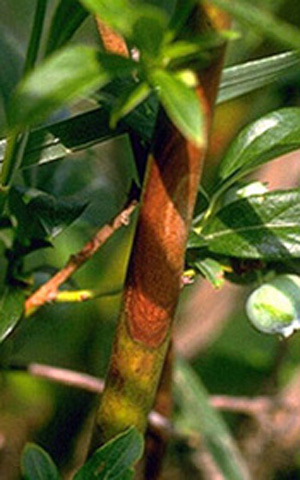
Phomopsis canker and twig blight:
Phomopsis is a fast-moving fungus that usually enters blueberries through the tips of the canes. Cut away any cane tips that look black and dead. Watch for dead wood in pruning cuts. If possible, prune down until the wood is all green. Read more about canker diseases at this link.
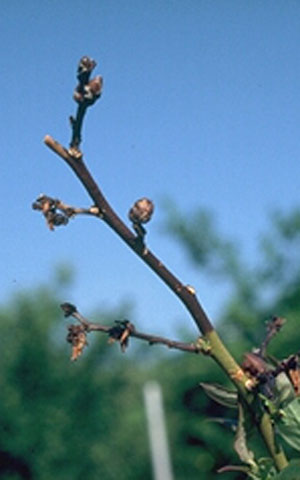
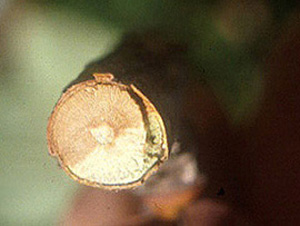
Stem gall wasp:
Stem galls can be caused by a small wasp that lays its eggs in the blueberry cane. If the stem galls do not have holes, remove and burn them. Read more about stem gall wasp at this link.
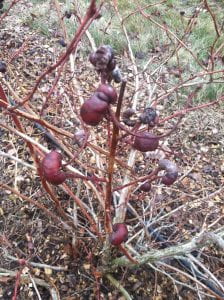
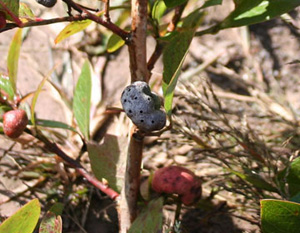
Witches’ Broom
A rust fungus that dwells on white firs can cause witches’ brooms in blueberries, an unproductive overgrowth of branches. Cut affected canes out at the base of the plant. Read more about witches’ broom at this link.
